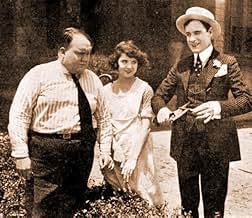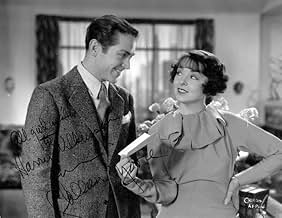Colleen Moore(1899-1988)
- Actress
- Soundtrack
Colleen Moore was born Kathleen Morrison in Port
Huron, Michigan. Her father was an irrigation engineer and his job was
good enough to provide the family a middle-class environment. She was
educated in parochial schools and studied at the famed Detroit
Conservatory. Colleen's family moved to Atlanta, Georgia, and later to
Tampa, Florida, where she spent some of her happiest years. She
described her childhood as a happy one where her parents were very much
in love. In fact, she claims she never heard her parents argue with
each other, although she admitted they had their differences. As a
child she was fascinated with films and the queens of the day such as
Marguerite Clark and Mary Pickford and kept a scrapbook of those actresses; she even
kept a blank space for the day when she would be a famous star and
could put her picture there. When a neighbor down the street from her
had a piano delivered, Colleen talked the deliverymen into taking the
wooden packing crate to her house, and she set it up as a stage. It was
the beginning of her career, as she and her friend performed plays for
the other neighborhood children. By 1917 she would be on her way to
becoming a star. Colleen's uncle, Walter C. Howey, was the editor of the
"Chicago Tribune" and had helped D.W. Griffith make his films The Birth of a Nation (1915) and
Intolerance: Love's Struggle Throughout the Ages (1916) more presentable to the censors. Knowing of his niece's acting
aspirations, Hovey asked Griffith to help her get a start in the motion
picture industry. No sooner had she arrived in Hollywood than she found
herself playing in five films that year, The Savage (1917) being her first. Her
first starring role was as Annie in Little Orphant Annie (1918). Colleen was on her way.
She also starred in a number of westerns opposite Tom Mix, but the
movie that defined her as a "flapper" was the classic Flaming Youth (1923), in which
she played Patricia Fentriss. By 1927 she was the top box-office draw
in the US, pulling in the phenomenal sum of $12,500 a week (unlike many
other young, highly-paid actresses, however, Colleen did not spend her
money frivolously. Instead, she put it into the stock market, making
very shrewd investments). She successfully made the transition into the
"talkie" era of sound films. Her final film role was as Hester Prynne in
The Scarlet Letter (1934). She did make one final appearance in the TV mini-series
Hollywood (1980), but it was her silver screen appearances that mattered most.
After she retired she wrote two books on investing and went so far as
to marry two stockbrokers. On January 25, 1988, Colleen died of an
undisclosed ailment in Paso Robles, California. She was
88.


























